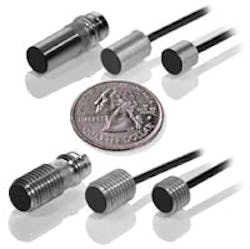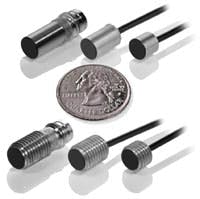Tiny Sensors Bring New Possibilities
That means control system components, even at the sensor level, have to follow suit because theres less free space for device mounting and required access.
Balluff recognizes these new design imperatives. The company has introduced SuperShorties, a new family of short inductive proximity sensors intended primarily for industrial OEM applications.
For more information
Call 800/543-8390, e-mail [email protected], or browse to balluff.com
The new sensors can be installed into cramped places where inductive sensors couldnt fit before, says Henry Menke, Balluffs product marketing manager. Their extremely low mass enables abrupt acceleration and deceleration on highly dynamic, fast-moving equipment without adding excessive inertial load, he adds.
Claiming the shortest fully integrated inductive sensors on the market, Menke says SuperShorties are designed for high-speed, pick-and-place equipment; miniature grippers, linear slides and valves; compact actuators; and most other highly compact, precision mechanisms.
These sensors are so small that OEM control system design engineers now have free reign to integrate sensing functionality in areas that previously couldnt accommodate any conventional sensor, says Menke. For example, SuperShorties have such small dimensions and low mass that they can be placed directly into a gripper finger without adversely impacting its size or weight. As rugged inductive sensors, they can survive in close proximity to industrial processes where shock, vibration and liquid or particulate contamination would take optical sensors out of action quickly. The sensors carry a protection rating of IP67 and have flex-rated cabling.
SuperShorties are available in Ø6-mm smooth and M08 threaded housings, and prewired cable models are just 6 mm long, while connectorized models are only 18 mm long, says product specialist Jeff Himes. All have a nominal 1.5-mm sensing range. The sensing electronics are fully integrated into the housings, so no bulky external amplifiers are required. Despite the small size, their electrical outputs are fully protected against short circuits and polarity reversal.
The sensors have exceptionally low mass at 0.7 g and are ideal for applications in which rapid acceleration and deceleration is required, adds Pat Helm, Balluffs automated assembly business development manager. SuperShorties provide simplified installation, and can be glued or threaded directly into the machine components quickly. Alternatively, a range of optional mounting accessories is available, including vertical and right angle brackets, says Helm.


